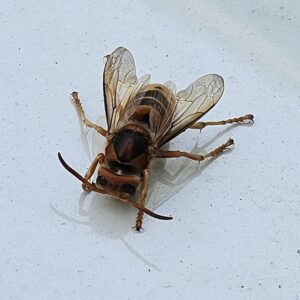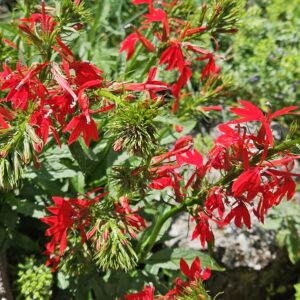
There was a rare sighting of an insect pollinator in my yard recently. Unfortunately, it was dying. I suspect that pesticides were the cause of the slow death.
The ordinary person has no clue how damaging pesticide applications on their lawns and plants can be to insects living nearby. To pollinators (e.g., bees and wasps). To entire insect and bird ecosystems.
On the day I saw the dying insect pollinator, an immediate neighbor had not one, but two pesticide applications by two different services in one day! One service was for their lawn, and the second one was for mosquitos (using pyrethroid and cypermethrin insecticides) with a device that looks like a leaf blower. This device is held at waist-height (a high volume application).
Soon after that I found the dying, but still twitching, pollinator on the hood of my car (close to the property line). As I've discussed before, since the neighbor started mosquito pesticide applications 2 years ago, I rarely see a bee, wasp, or butterfly in my organic yard. At most, maybe one bee every 2 months? Before that, there were many daily.

The mosquito applications are done using cypermethrin and pyrethroid insecticides (which are synthetic pesticides, e.g., made by Fendona). Pyrethroids are known to be highly toxic to pollinators such as bees and wasps, and there is growing evidence of harms to humans (here, here).
Of course, when pesticides are applied, they drift and travel to non-target neighboring areas. It's sad. But totally legal.

